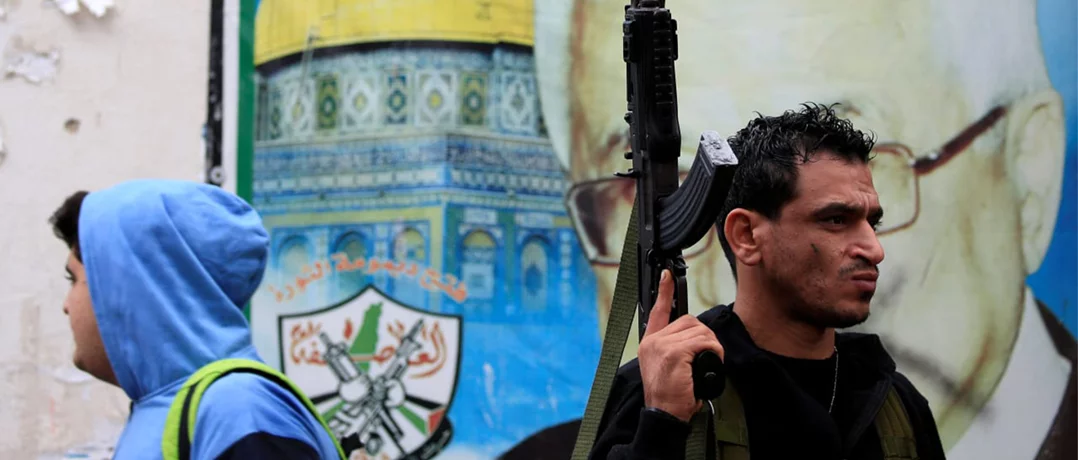Lebanon has launched its first tangible effort in years to regulate weapons inside Palestinian refugee camps, a step officials say aims to consolidate all arms under state authority. The initiative follows decades of stalled attempts to address a sensitive issue rooted in the country’s modern history.
Palestinian refugee camps in Lebanon were established after the 1948 Nakba, when hundreds of thousands of Palestinians fled their homes following the creation of Israel. Over time, camps such as Burj al-Barajneh, Ain al-Hilweh and Rashidieh became densely populated urban enclaves with their own security arrangements, often hosting armed factions. During the 1975–1990 civil war, these camps served as strongholds for various Palestinian groups and militias, further entrenching their autonomy and complicating state efforts to regulate arms.
First weapons handover begins
On August 21, a small truck carrying light and medium weapons, including RPG launchers, left Burj al-Barajneh camp in Beirut and delivered its cargo directly to the Lebanese Army. The operation marks the beginning of a phased collection process, with Al-Buss camp in Tyre expected next, followed by Beddawi in the north and the larger southern camps of Ain al-Hilweh, Mieh Mieh, Rashidieh, and Burj al-Shamali.
The effort comes after President Joseph Aoun and Palestinian President Mahmoud Abbas reaffirmed that weapons should remain under state control, laying the groundwork for a joint dialogue committee that mapped out a comprehensive collection plan. Following this, the Cabinet officially tasked the army with gathering weapons from all camps by the end of 2025.
Past attempts to disarm the camps
Lebanon has tried several times to regulate Palestinian weapons, but with limited success. In 1969, the Cairo Agreement officially granted Palestinians the right to bear arms inside the camps, a deal that effectively placed the camps beyond Lebanese sovereignty. This agreement was annulled in 1987 by Parliament, yet attempts to enforce disarmament largely stalled.
In the aftermath of the Civil War, the 1989 Taif Agreement called for the dismantling of all militias, but Palestinian factions resisted, arguing their arms were linked to the unresolved conflict with Israel. In 2006, Lebanon’s national dialogue reaffirmed the principle of restricting Palestinian arms to inside the camps only. More recently, deadly clashes in Ain al-Hilweh in 2023 once again highlighted the risks posed by the continued presence of weapons in these camps, renewing calls for stricter oversight.
Skepticism and security risks
Despite official assurances, many observers see the first handover as largely symbolic. Retired Brigadier General Mounir Chahadeh told The Beiruter that the Burj al-Barajneh operation was “a shy and symbolic gesture. The truck that left the camp hardly equals the weapons stored in one building in any Lebanese neighborhood. It seemed intended more to signal intent than to change realities on the ground.”
Chahadeh explained that most of the arms in the camps are light or medium, while the army, heavily deployed south of the Litani River and along the eastern border, is not in a position to forcibly disarm factions. He also cautioned against repeating the 2007 Nahr al-Bared scenario, when a security operation inside a camp escalated into deadly conflict.
“The file is complex and requires careful coordination between Lebanese agencies and all Palestinian factions,” Chahadeh said. “Its outcome depends not only on internal consensus but also on regional dynamics, particularly U.S. pressure on Israel over border withdrawals and prisoner issues. Any comprehensive resolution of the weapons question will ultimately need to be addressed at the presidential level.”
Wider implications
The operation also resonates beyond the Palestinian camps. Many analysts view the initiative as a potential prelude to Lebanon’s most contentious security debate: Hezbollah’s arsenal. However, failure to secure compliance in the camps could undermine any attempt to tackle that more sensitive issue.
For now, Lebanon stands at a crossroads. The weapons that left Burj al-Barajneh may be modest, but they mark the opening of what could become the state’s boldest post-war attempt to reclaim sovereignty over arms. Whether this process develops into meaningful disarmament or remains symbolic will depend on the steps that follow.




